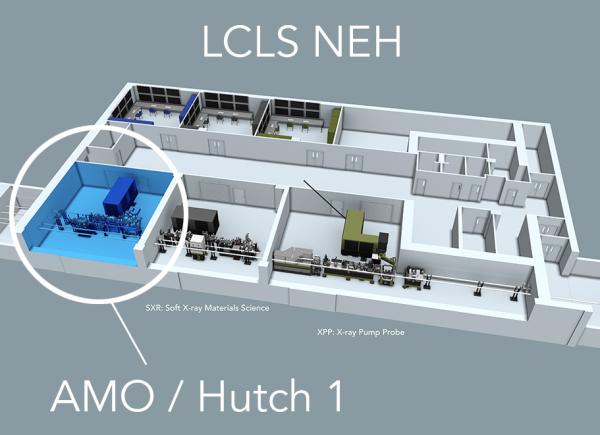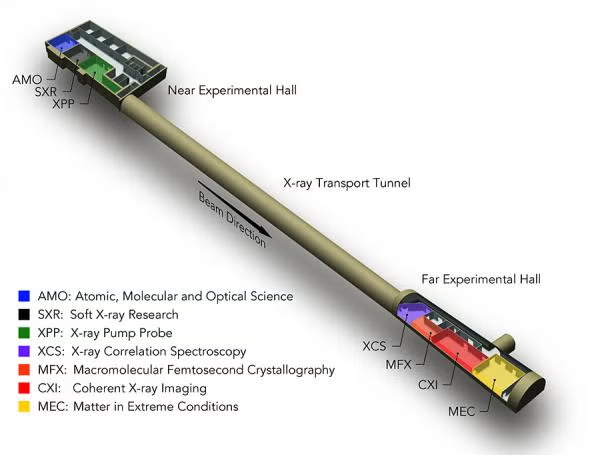AMO End Stations
LAMP Multipurpose End-Station
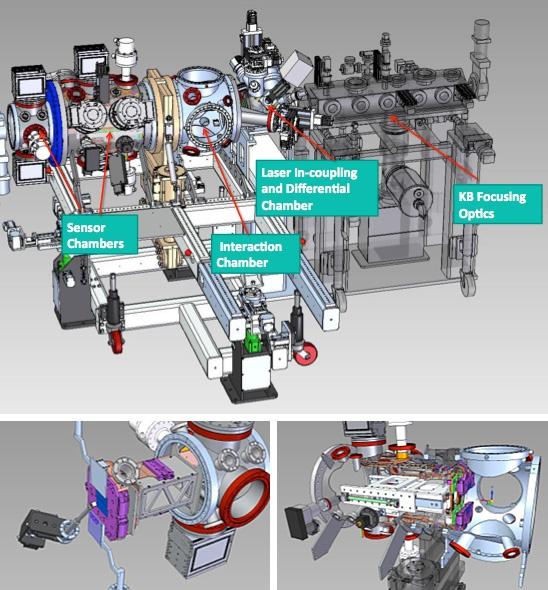
LAMP is a multipurpose instrumental end-station based on the highly successful previous generation CAMP chamber. It houses two megapixel X-ray sensor planes compatible with 120 Hz frame rate data aquisition. It has been designed to be deployed at the LCLS soft X-ray end-stations (AMO/SXR) and supports a wide variety of instrumentation including spectrometers, laser in-coupling systems, gas and cluster atomic and molecular sources, in-vacuum manipulator devices and vacuum diagnostics. This instrument has been designed to support a wide array of experimental conditions including imaging, spectroscopy and multi-beam experiments.
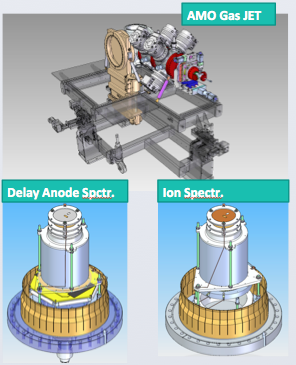
The two large-area (78 x 74 mm2) 1 Megapixel pnCCD detectors (75 x 75 µm2 pixel size) sensor planes are capable of counting single scattered or fluorescent photons with high quantum efficiency (> 90%) with an energy resolution of 40 to 200 eV between < 100 eV and 25 keV. A variable-sized hole in the center of the first CCD allows the direct FEL beam (and a high-power pump laser, if applicable) to pass through the detector, while the small-angle scattering signal within the area of the hole can be detected on the second CCD, which has a fixed-sized hole for the direct FEL beam. Both sensors can be operated in high resolution imaging or spectrometer mode, and are capable of sub-pixel resolution in sparse data through the use of clustering algorithms to the electron-hole silicon diffusion cloud.
Specially-designed ion and electron spectrometers (VMI, Delay anode positioning spectrometers and a conical lens full solid angle collection electron and ion specrometer) detect ions and/or electrons created in the interaction region within a large solid angle and allow measuring their kinetic energies and emission directions, while still providing an unrestricted line-of-sight from the interaction region to the pnCCD detectors. In order to account for different operation modes, the charged particle spectrometers are equipped with a delay-line anode for single particle detection as well as a phosphor screen/CCD camera for applications where several hundred or thousand electrons or ions are created by each FEL pulse. The unique combination of large-area, single-photon counting pnCCD detectors and advanced charged particle spectrometers thus allows measuring fluorescent or scattered photons in coincidence with ions and/or electrons.
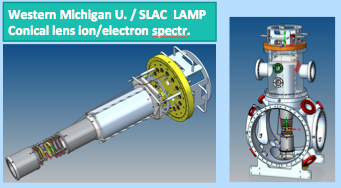
Additionally, the end station is suitable for coherent diffractive imaging experiments on biological and other targets and is therefore constructed in a highly modular design: the charged particle spectrometers can be easily removed and various other types of detection devices and spectrometers, (supersonic) gas and cluster-jets, droplet-jets, aerodynamic lenses as well as fixed targets can be inserted. Several ports for optical lasers are also provided.
AMO CONTACT INFO
Peter Walter
SXD Instrument Scientist
(650) 926-3997
pwalter@slac.stanford.edu
Stefan Moeller
SXD Instrument Scientist
(650) 926-5321
smoeller@slac.stanford.edu
AMO Control Room
AMO LOCATION
